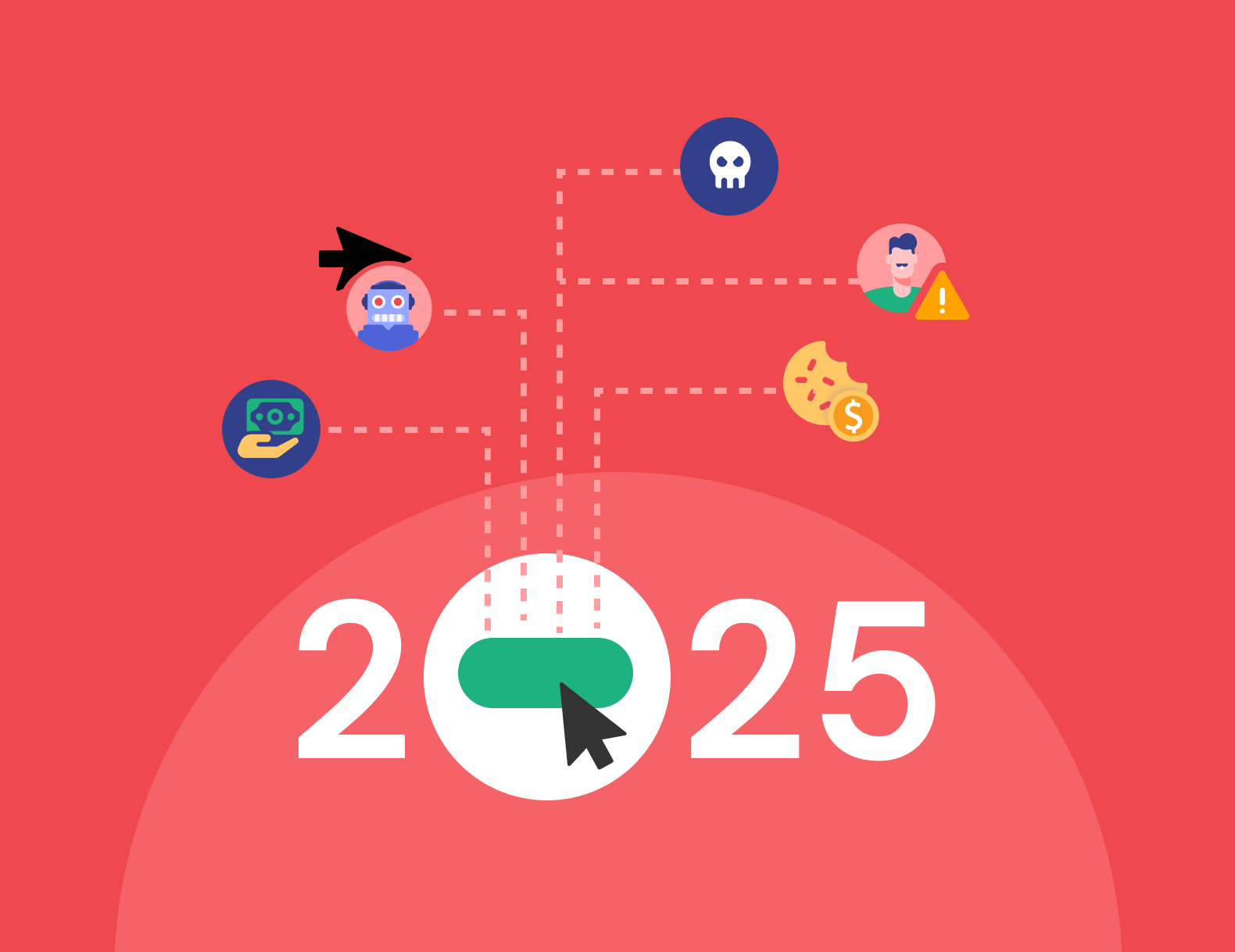The State of the US Sports Betting Market in 2026

The US sports betting market enters 2026 with unprecedented momentum. What began as a fragmented, state-specific activity has become one of the fastest-growing entertainment and digital commerce sectors in the country. With more states regulating online wagering and more Americans betting than ever, the industry’s growth is reshaping marketing, technology, and the competitive landscape for operators.
Yet with expansion comes new challenges. Regulatory scrutiny is rising, digital advertising costs continue to climb, and invalid traffic creates an increasingly expensive obstacle for acquisition teams. Understanding the forces shaping this market in 2026 is essential for operators competing at scale.
This blog breaks down where the market stands, what is driving participation, and how sportsbooks can compete effectively in a growing and highly contested digital environment.
What Is Driving Growth in the US Sports Betting Market?
Expanding legalisation
Legalisation remains the strongest engine behind market growth. Since the repeal of PASPA in 2018, more than two thirds of states have adopted some form of online or retail sports betting. Every new state launch brings a surge of operators, aggressive promotional activity, and millions of new customers entering the market.
Mobile and online betting adoption
Consumers overwhelmingly prefer digital sportsbooks. Mobile betting accounts for the vast majority of wagers in fully regulated states, driven by convenience, personalisation, and real-time engagement. As mobile apps improve and user experiences standardise, online betting continues to absorb market share from retail sportsbooks.
New state launches and tax incentives
States continue to recognise the value of tax revenue generated by regulated sports betting. Markets that entered regulation in 2023 and 2024, such as Kentucky, Nebraska, and Ohio, collectively contributed over USD .49 billion in sports betting revenue in their first full year of operation. New markets launching in 2026 will continue this trend.
Where Sports Betting Is Legal in the United States
States with full legalisation
Most states now allow online sports betting, retail betting, or both. These fully regulated markets have mature competition, high mobile penetration, and established licensing frameworks.
States with retail-only betting
A small group of states allow retail wagering but still prohibit online sports betting. This includes markets such as Montana, Nebraska, and South Dakota. These states often cite concerns related to responsible gambling or the need for additional regulatory planning.
States reviewing legislation
Several major markets are actively reviewing sports betting legislation. Texas, South Carolina, and Oklahoma remain the most watched states moving into 2026, with active bills under consideration.
States with full prohibition
Twelve states still do not permit sports betting of any kind, including California, Georgia, Hawaii, Idaho, and Utah. In many cases, legislative challenges, political resistance, or competing interests prevent progress.
US Sports Betting Market Size and Revenue Trends
Total wagers and revenue growth
The US sports betting market has continued to accelerate. Americans are projected to wager between USD 160 billion and USD 170 billion legally in 2025 across the 38 states and Washington, D.C. where sports betting is regulated. This surge reflects sustained national appetite, wider legal access, and record engagement around major sporting events. With more states preparing to launch online betting, the figures are expected to climb further in 2026.
Changes in hold percentage
The national hold percentage increased from 8.1 percent in 2022 to 9.1 percent in 2023. This metric, which represents the proportion of wagers retained by sportsbooks, directly influences operator profitability in regulated markets.
Contribution from newly launched states
Newly regulated states accounted for more than USD 1.49 billion in revenue in their first full year. Ohio alone contributed USD 936.6 million, becoming the fourth largest market nationally within months of launch.
Emerging Trends Shaping the US Sports Betting Market
Mobile and online user growth
Online betting revenue is forecast to reach USD 17.07 billion by 2029. User penetration is expected to rise from 11 percent in 2024 to 15.6 percent in 2029, with more than 54 million active users.
Growth in eSports betting
The eSports betting market is projected to generate USD 1.1 billion in revenue by 2028. With an average revenue per user of USD 53.80, eSports continues to gain traction among traditional bettors and digital-native audiences alike.
Blockchain and crypto-led wagering innovation
Wyoming’s adoption of blockchain for sports betting transactions has accelerated conversations nationwide. Crypto-funded accounts, digital wallets, and peer-to-peer wagering represent an emerging frontier, particularly as consumers seek faster withdrawals and lower transaction fees.
The Most Popular Sports to Bet on in the US
NFL dominance
The NFL remains the powerhouse of American betting. More than 60 percent of bettors place wagers on football, and the Super Bowl reliably sets new records each year.
NBA, MLB, and other major leagues
The NBA attracts 58 percent of bettors, while Major League Baseball draws 53 percent. Boxing, horse racing, hockey, and NASCAR all maintain strong participation rates.
Emerging categories including eSports
Approximately 23% of bettors now place wagers on eSports, making it one of the fastest-growing categories of interest.
In-Person vs Online Betting in the US Market
Participation patterns
Online betting is rapidly outpacing in-person wagering due to ease of access and the ubiquity of mobile devices.
Differences in experience and accessibility
Retail sportsbooks offer an immersive, social experience, but online platforms provide broader selection, personalisation, and the freedom to place bets anywhere.
Market implications for operators
Online sportsbooks must refine user journeys, improve conversion rates, and maintain strong verification standards to stay competitive as customer acquisition costs rise.
How Sports Betting Operators Can Win in a High-Growth Market
Strengthening digital acquisition
Operators entering new or competitive markets face rising CPAs and inflated CPCs. Efficient customer acquisition requires cleaner signals, accurate attribution, and real-time visibility across channels.
Combating invalid traffic to improve ROI
The rise of bots, emulators, and returning users is creating significant challenges for digital advertising teams. Many of these issues stem from click fraud, which distorts spend, corrupts optimisation signals, and weakens conversion data Implementing robust verification through click fraud detection software is essential for protecting acquisition spend in high-volume environments.
The role of real-time verification for sportsbooks
Real-time blocking, click-level validation, and audience cleansing remain critical for maximising optimisation signals and improving downstream conversion quality. Operators looking for end-to-end protection can benefit from purpose-built click fraud protection for sports betting, which improves budget efficiency and reduces waste across Google Ads, Meta, and affiliate channels.
Scaling efficiently in newly opened markets
New state launches attract aggressive competition. Operators that remove invalid traffic early gain cleaner data, lower CPAs, and faster visibility into incremental conversions. This positions brands to capture market share during the highest-value acquisition windows.
FAQ & Key Takeaways
1. Which states are most likely to legalise online sports betting next?
Texas, South Carolina, and Oklahoma remain the highest-potential states under active review. These markets have growing political interest in regulation and represent major population centres that would significantly influence national market share. Several smaller states are also exploring limited retail frameworks that could expand to mobile betting in future.
2. How big will the US sports betting market be by 2027?
Revenue is forecast to exceed USD 15 billion by 2027. Growth will be driven by additional state launches, rising mobile penetration, and increased betting volume during major sporting events. Markets such as New York, New Jersey, Illinois, Pennsylvania, and Ohio will continue to lead national revenue.
3. What sports generate the highest betting activity in the US?
The NFL remains the strongest driver of betting activity, followed by the NBA and MLB. Sports such as boxing, UFC, horse racing, hockey, and NASCAR contribute additional volume around key events. eSports is a fast-growing category among digital-native users.
4. Why has online sports betting overtaken in-person betting?
Online betting offers ease of access, instant wagering, broader market options, and personalised experiences through mobile apps. Younger bettors prefer mobile platforms, and operators have invested heavily in live betting and fast payouts, which further accelerate digital adoption.
5. How does invalid traffic affect sports betting advertising performance?
Invalid traffic inflates CPCs, weakens optimisation signals, and distorts acquisition metrics. Bots, click farms, duplicate clickers, and emulators reduce data accuracy, making it difficult for sportsbooks to measure true ROI or scale campaigns in competitive states.
6. How can operators reduce invalid traffic across Google Ads and Meta?
Performance teams rely on real-time verification, click-level filtering, audience cleansing, and rules-based detection to identify non-genuine clicks. Removing invalid traffic early prevents wasted spend, protects optimisation cycles, and improves conversion quality across acquisition channels.
7. What should sportsbooks prioritise when launching in a newly regulated state?
Speed and data clarity are essential. New entrants should focus on clean acquisition data, accurate attribution, effective promotional strategy, and early suppression of invalid traffic. These steps help operators capture high-value players during the most competitive period of a new market launch.
8. Is eSports betting a meaningful growth opportunity for US operators?
Yes. eSports betting continues to rise due to strong engagement from younger, digitally native audiences. While ARPU is typically lower than major sports, bet frequency and year-round events make eSports an attractive channel for operators expanding their user base.
Get started - it's free
You can set up a TrafficGuard account in minutes, so we’ll be protecting your campaigns before you can say ‘sky-high ROI’.
Subscribe
Subscribe now to get all the latest news and insights on digital advertising, machine learning and ad fraud.








